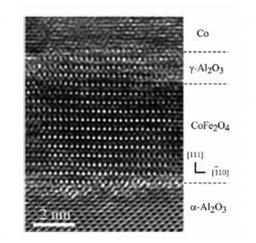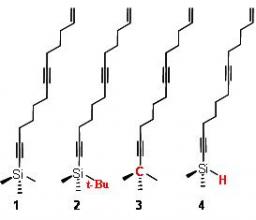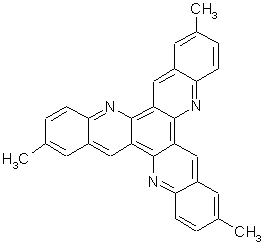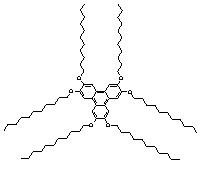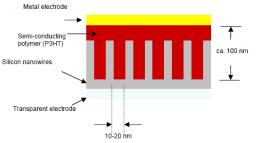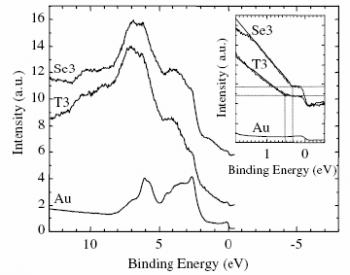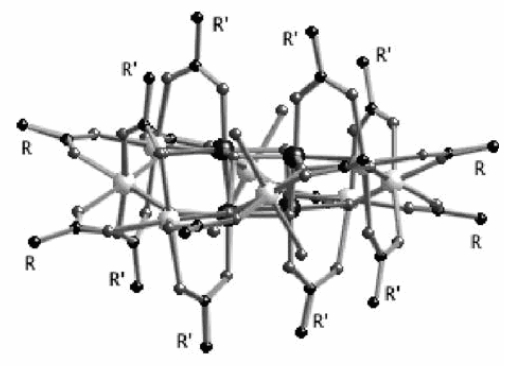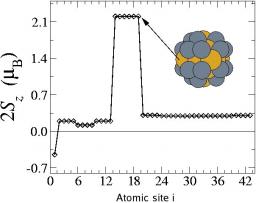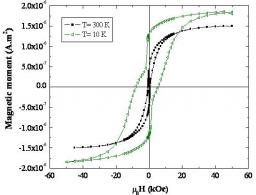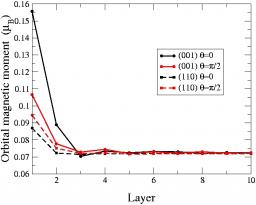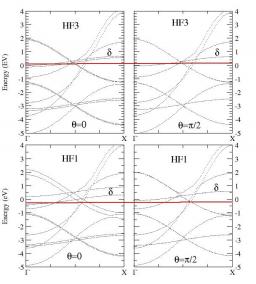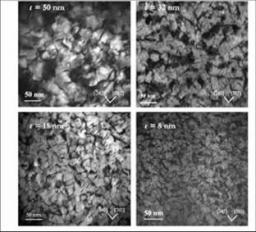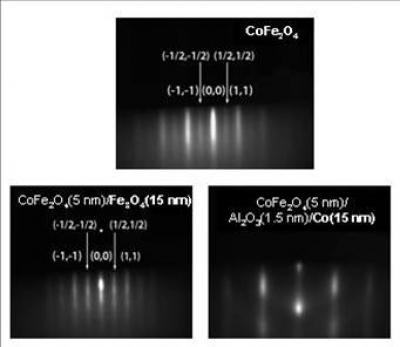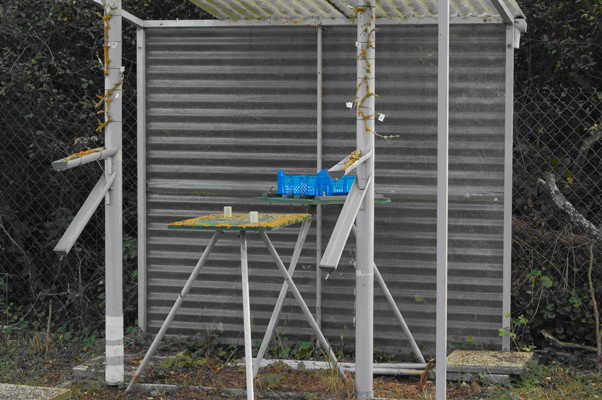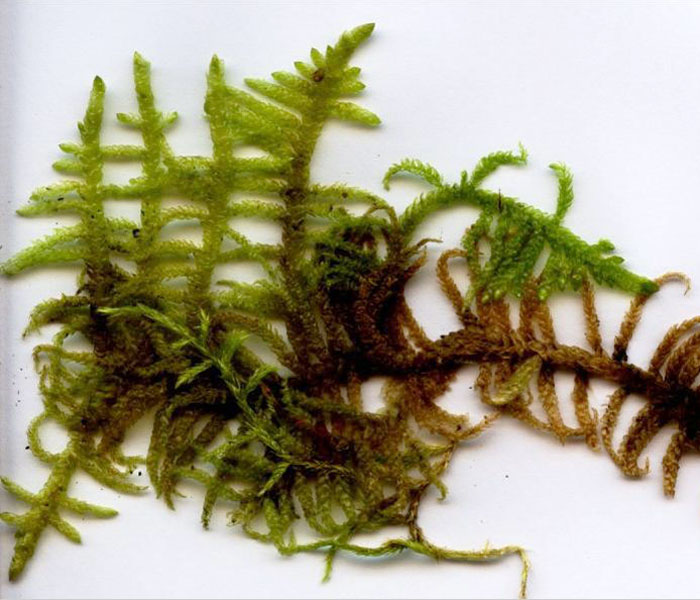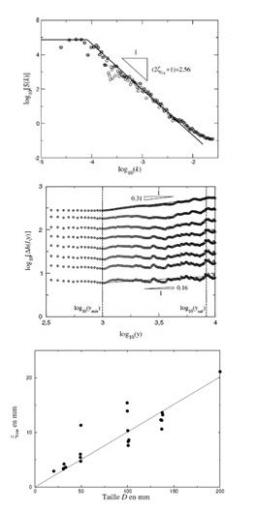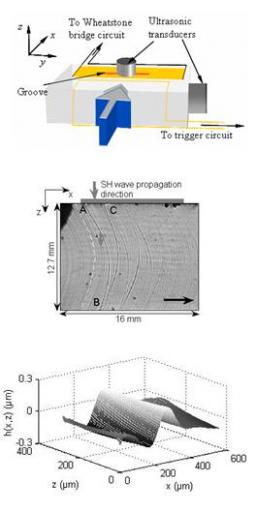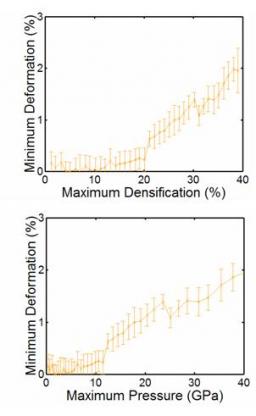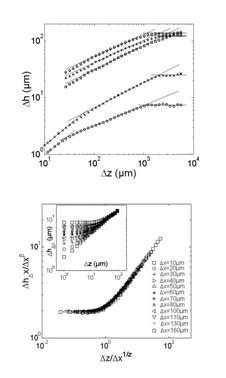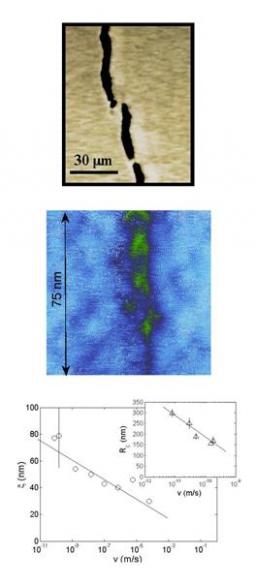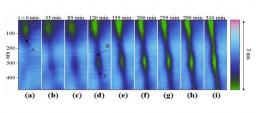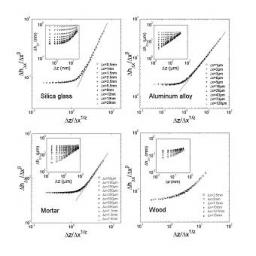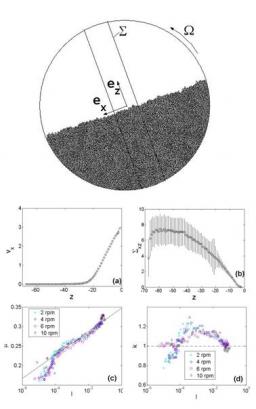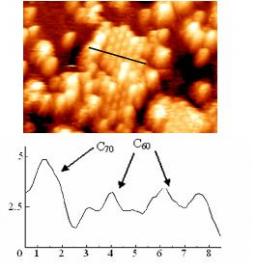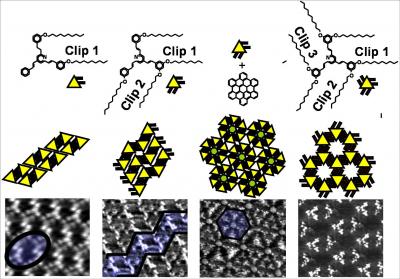Pages scientifiques 2007
The generation of highly spin-polarized electron currents is one of the dominant focusses in the field of spintronics. For this purpose, spin filtering is one very interesting phenomenon, both from a fundamental and from a technological standpoint, that involves the spin-selective transport of electrons across a magnetic tunnel barrier. Successful spin filtering at room temperature could potentially impact future generations of spin-based device technologies not only because spin filters may function with 100% efficiency, but they can be combined with any non-magnetic metallic electrode, thus providing a versatile alternative to half-metals or MgO-based classic tunnel junctions. The spin filter effect originates from the exchange splitting of the energy levels in the conduction band of a magnetic insulator. As a consequence, the tunnel barrier heights for spin-up and spin-down electrons are not the same, leading to a higher probability of tunneling for one of the two spin orientations.
CoFe2O4 is a very promising candidate for room temperature spin filter applications thanks to its high Curie temperature (TC=793 K) and good insulating properties. Electronic band structure calculations from first principles methods predict CoFe2O4 to have a band gap of 0.8 eV, and an exchange splitting of 1.28 eV between the minority (low energy) and majority (high energy) levels in the conduction band , thus confirming its potential to be a very efficient spin filter, even at room temperature. In order to accurately demonstrate the spin filtering capabilities of CoFe2O4 up to room temperature, we have prepared CoFe2O4(111)/γ-Al2O3(111)/Co(0001) fully epitaxial tunnel junctions by oxygen plasma-assisted molecular beam epitaxy (MBE) on Pt(111) underlayers. In this system, the spinel γ-Al2O3 serves to decouple the CoFe2O4 and Co magnetic layers. Before any spin-polarized transport measurements were performed on the full MTJ system, our CoFe2O4(111)/γ-Al2O3(111) tunnel barriers were carefully characterized by a wide range of techniques in order to optimize their structural and chemical properties. Fig.1 shows a high resolution transmission electron microscopy (HRTEM) study demonstrating the high crystalline quality of our CoFe2O4 (5 nm)/γ-Al2O3 (1.5 nm)/Co (10 nm) multilayers. In particular, we observe near perfect epitaxy in the single crystalline CoFe2O4(111)/γ-Al2O3(111) tunnel barrier, which is a consequence of the optimized growth conditions and the spinel structure of both constituents.
We discovered in 2002 (JACS 124, 9998, 2002) that the linear multifunctional trimethylsilyl-acetylene 1 ,TMSA, (schema 1) forms long-range and highly stable self-assembled monolayers (SAMs) on reconstructed Au(111). In order to better understand the interactions governing self-assembly in this new system, we synthetized a series of homolog organosilanes and performed STM observations at the Au(111)/n-tetradecane interface.
In collaboration with N. Saettel, and M-P. Teulade-Fichou (Institut Curie, Orsay)
Extended planar aromatic systems represent attractive targets as active materials in electronic devices. Some of them are also commonly used in biology to achieve structure-specific recognition of DNA through p-π overlapping of nucleic bases. In order to achieve their self-organization in solution or the solid state it is therefore essential to tailor them properly. From this viewpoint, planar conjugated molecules having a threefold symmetry and bearing long alkyl chains are of particular interest because they behave as liquid crystals.
Among the many types of liquid crystals (LCs), planar disk-like molecules such as triphenylenes are known to exhibit columnar mesophases. An example of such compounds are 2,3,6,7,10,11-hexakis-alkoxy-substituted triphenylenes, hereafter noted Tn where n indicates the number of carbon atoms in the alkyl chains. Tn molecules consist in flat polyaromatic cores symmetrically surrounded by flexible n-carbon side chains (Figure 1). When deposited on a surface, Tn molecules stack upon each other to form hexagonally packed columns with a p-p stacking configuration. Triphenylene LC mesophases present a quasi-1D transport of charge carriers along these vertical columns which make them attractive for electronic devices applications.
1:
2: Laboratoire Léon Brillouin, CE-Saclay, F-91191, Gif-sur-Yvette, France
3: A. F. Ioffe Physico-Technical Institute,
4:
The properties of magnetics confined in nanometer scale cavities drastically differ from those in the bulk material. The investigation of model materials in the unusual conditions of a so-called “restricted geometry” is of fundamental interest since the confined geometry and the influence of the surface yield unusual properties.
As CMOS goes towards 65nm technology node, the integration of traditional memory cells such as DRAMs and non-volatile Flash gets limited. The solutions proposed for their replacement (FeRAM, MRAM, PCM) show a large energy consumption. Therefore there is still a need for a high-density and ultra low-power memory devices suited to respond to the growing market of wireless Systems On a Chip (SOC). For this purpose, the concept of Negative Differential Resistance memory (NDR) based on Resonant Tunneling molecular Diode (RTD) appears very promising. Indeed, with one of the electrodes a semi-conductor, one can take benefit of the localized density of states.
The "heart" of the device is indeed the interface linkage between the electrode and the molecule, together with the order within the monolayer. Molecules with a σ−π−σ sequence have already been derived from molecular orbital calculations in order to allow significant electron transfer from silicon at moderate voltage (below 3V). Those tri-block molecules were chemically grafted onto hydrogenated silicon surfaces (Si-H) and the resulting monolayers were fully characterized by IRRAS, XPS and ellipsometry. [1-2]
It was thus shown that :
- SiH surfaces are spontaneously re-oxidized in ambient conditions with a half-life period close to 4 hours
- Acid-terminated chains and activated-ester-terminated chains can be grafted either thermally or electrochemically on SiH without any re-oxidation of the silicon surface, provided strictly anhydrous and oxygen-free conditions are used. The thermal route gives monolayers of higher density and quality, as shown by AFM
- The σ−π−σ sequence can be built directly on the SiH surface by a sequential method from an acid-terminated monolayer and aromatic amines. Limited re-oxidation of the silicon surface was observed after the amide formation.
Most solar cells industrially produced are currently based on silicon wafers (93.5 %). As a result, the price of photovoltaic modules is very high (5.6 €/Wp at its lowest in 2004) and is still expected to increase, due to a fast growing demand and a shortage in silicon production. Moreover, single-crystal silicon solar cells, which have a power conversion efficiency of more than 20 %, are heavy and fragile, which prevents them from being used for mobile applications.
Several concepts have been developed to tackle these problems. Inorganic thin film devices (based for example on amorphous silicon or CuInGaSe2) have reached efficiencies above 12 % and enter commercial stage. Organic solar cells are on the other hand expected to show lower production costs and easier integration on flexible substrates. Yet they still have low efficiencies (around 5 % at best) and suffer from short lifetimes as compared to inorganic devices.
Nanostructured materials are considered one of the best ways to improve the efficiency of organic and hybrid solar cells. Indeed, devices based on such materials have an increased interface area and a reduced average distance from one point to an interface. As the separation of charge carriers occurs at interfaces, such structures enhance it, and thus lead to an increase in the photocurrent. Bulk heterojunctions between polymers and inorganic nanoparticles lead to efficiencies of 1.8 % (with MDMO-PPV and branched CdSe nanoparticles). Devices, where nanostructured materials are directly grown on the substrate, would additionally bring an electrically continuous path from the active interface to the electrodes.[1]
The project aims at demonstrating the relevance of this approach by making devices (Fig. 2) based on silicon nanowires directly grown on a transparent conductive oxide, and poly(3-hexylthiophene), which shows one of the highest hole mobility among semi-conducting polymers (0.1 cm2.V-1.s-1).
The exact contribution from the contact conductance has been much less investigated, mainly because the thiol-gold couple overwhelms the other interface linkages in literature, and also because comparison experiments are quite difficult.
First, density functional theory calculations were used to show that the two molecules isolated in vacuum have quite a similar electronic structure. In particular, their calculated ionization potentials differ by less than 1%, revealing the absence of a significant difference between the two molecules when isolated in vacuum. The electronic density representation of the orbitals confirms this similarity. This suggests to interpret our STM results as a direct consequence of a difference in adsorption of Se3 and T3 onto gold due to their different coupling groups.
Then, ultraviolet photoelectron spectroscopy (UPS) was used to study SAMs of pure T3 or Se3 were prepared onto gold substrates. T3 and Se3 spectra show a good similarity with that of thick terthiophene, which means that the electronic structure of the adsorbed molecules core remains largely undisturbed by the adsorption onto the metallic surface.
However, tiny but significant differences nevertheless exist between T3 and Se3 SAMs spectra. In particular, the two peaks at lower energy are shifted towards higher energies by about 0.2 eV in the case of T3 compared to Se3. (Fig. 1)
Due to their outstanding properties (Young modulus E = 45 GPa, conductivity = 1 GA cm-2), carbon nanotubes (CNTs) have recently subjected lot of attraction. Indeed, CNTs find applications in different topics such mechanical reinforced composite materials, microelectronics, and biology for example. However, CNTs are poorly soluble and prone to aggregation in bundles.
Thus, processing of CNTs is a key point for future applications and requires appropriate chemical modification. Among the numerous methods published in recent literature for functionalizing CNTs, chemical and electrochemical grafting appear the most frequent. In particular, atom transfer radical polymerization (ATRP), covalent anchoring of preformed polymer chains and electrografting of diazonium salts on CNTs have recently been reported.
We first studied cathodic electrografting on CNTs using the Surface Electroinitiated Emulsion Polymerization (SEEP) process, where diazonium salts are used both to initiate the radical polymerization of vinylic monomers in solution and to form a primer grafted polyphenylene like layer on the carbon surface. SEM and TEM analysis revealed that ultrathin polymer films are grafted on carbon nanotubes sidewalls. XPS spectroscopy further confirmed the functionalization of multi-walled carbon nanotubes.
Polynuclear complexes that possess a large spin ground state associated with strong magnetic anisotropy have attracted much attention during the last decade. Such complexes have a magnetic bistability that can be associated to a single molecule. They are called Single Molecule Magnets (SMM).
Among SMMs, the so called Mn12 is still the most studied since it possesses the highest blocking temperature below which bistability occurs. These molecules may be integrated in a device for information storage; quantum calculation may be envisaged as well because Quantum Tunneling of the Magnetization (QTM) was evidenced in some systems.
The very early stage before building molecular devices is to manage manipulating small amounts of molecules and to study their magnetic properties individually. One of the first steps is to achieve systems where a small collection of molecules can be studied. We have chosen to graft them on silicon surfaces.
Mn12 has already been deposited on various surfaces using (i) the Langmuir–Blodgett technique, (ii) spontaneous grafting on gold by using a thiol-modified Mn12 complex, (iii) deposition of the biphenyl derivative of Mn12 and nanopatterning on polycarbonate films …None of those techniques allows controlling the orientation of the Mn12 moiety. We demonstrated that by using a mixed Mn12 complex (i.e. containing two different carboxylate groups) it is possible to graft a monolayer in an oriented manner on a silicon substrate.
We selected a Mn12 complex possessing dichloroacetate groups in axial positions and tert-butyl acetate groups in equatorial positions. That complex was allowed to interact with silicon substrates bearing chemically grafted carboxylic units (obtained from thermal grafting of undecylenic acid on Si-H(100) surfaces). ATR-FTIR spectra show that the carboxylic band at 1718 cm-1 almost vanishes after the immersion of the substrate in the Mn12 solution, which is the first evidence for the grafting of molecules by carboxylate substitution.
FeNi alloys are widely used magnetic materials. Surprisingly experiments have shown that the magnetic moment per atom in FeNi clusters is much lower than that of the bulk alloy of the same composition [1]. Using a Stoner-like tight-binding model, including spin-orbit coupling, we have calculated the magnetic properties of fcc FexNi1-x clusters (x<0.6) containing up to about 300 atoms for several compositions and three types of chemical order: random and core-shell structures with either Ni or Fe cores [2]. The results show that only the latter type of order is compatible with the observed reduction of moment which can be explained by the existence of an anti-ferromagnetic order in the fcc Fe core (Fig.1)
The discovery of the giant magnetoresistance (GMR) effects by Baibich et al. in Fe/Cr ferromagnetic multilayers provoked an important research effort and created the field of spintronics. The total current flow is described as the result of two independent conduction channels with electrons of different spin. Spin-dependent resistance is usually described by two scattering phenomena: one arising from the bulk of the magnetic layers and the other from the diffusion of electrons at the interface between magnetic layers and non-magnetic spacer layers. Two approaches have been used for a theoretical description of the GMR in current in plane (CIP) configuration, the “semiclassical” one deduced from the pioneering work of Fuchs and Sondheimer and the quantum-mechanical Kubo formalism. In the semiclassical approach, spin-dependent bulk resistivities and spin-dependent interfacial resistivities are taken into account. Thus in this model the spin-dependent interfacial resistivity is treated by introducing the proportions of electrons transmitted, specularly reflected, or diffusely scattered from the interfaces. In CIP magnetoresistance experiments, bulk and interface scattering contributions are usually not separable. The work of C. Gatel et al. [1] was to analyze the spin dependence of electron reflection and to experimentally examine the CIP-GMR effect which is only produced by the spin-dependent interfacial reflection. In this framework, the team of the CEMES has grown by sputtering epitaxial trilayers on α-Al2O3(0001) substrates consisting of two ferromagnetic insulating (FI) layers with different coercive fields: CoFe2O4(111) and Fe3O4(111) (which becomes an insulator below the Verwey transition) separated by a non-magnetic metallic (M) Au or Pt layer. The interfacial flatness and the high structural quality of these CoFe2O4/(Au or Pt)/Fe3O4 trilayers have been evidenced by X-ray reflectivity, X-ray diffraction and TEM [1]. One problem that had to be addressed was the 2D epitaxial growth of a thin and continuous metallic layer onto an oxide surface [2]. Figure 1 shows the magnetic hysteresis loops curves obtained in an Au-based system for different temperatures. Magnetic loops exhibit the butterfly-like shape corresponding to the separate switching of the two magnetic layers (first reversal due to Fe3O4).
The magnetic properties (spin and orbital magnetic moments, magneto-crystalline anisotropy energy (MAE)) of nanoparticles, thin films and wires have recently attracted a lot of attention due to their potential applications mainly in the Information Technology sector.
We have carried out a systematic study of the magnetic properties of iron in the tight-binding approximation including s, p, and d valence atomic orbitals taking into account spin polarisation using a Stoner-like model and in the presence of spin-orbit coupling[1]. The validity of the model has first been established by studying in details the magnetic properties of the bcc and fcc bulk phases and comparing the results to those of ab-initio calculations using the PWscf code. This model has then been applied to investigate the (110) and (001) bcc surfaces. The corresponding electronic structures and magnetic moments are very similar to those obtained from ab-initio codes. In addition we have studied the variation of the component of the orbital magnetic moment on the spin quantisation axis as a function of depth, revealing a significant enhancement in the first two layers, especially for the (001) surface (see Fig.1).
Spin electronics is an emerging science which aims at using the spin of the conduction electrons in electronic devices. In a near future, the fundamental mechanisms of spin transport will be affected by some physical limits linked to a further size reduction towards the nanometer scale. It is thus fundamental to understand these limits and more generally the physics of magnetism and transport in reduced dimensions.
Metal-metal nanocontacts are crucial in many areas, but have been poorly investigated from the point of view of local magnetism. This is a very appealing research domain, since local magnetism will greatly influence the (ballistic) conductance across a nanocontact. The break junction technique is a tool that allows the creation of stable (several hours) atomic contacts, which consists in breaking a material in a controlled manner by bending it until eventually a single atom contact appears between the two surfaces. Once a stable configuration is obtained the resistance can be measured as a function of an applied magnetic field. Michel Viret (CEA, SPEC) showed that in magnetic materials such as Fe, Co or Ni, one can obtain large magneto-resistive effects [1].
Fe3O4 is a very attractive material for applications involving spin-dependent transport at room temperature as this ferromagnetic oxide has a high Curie temperature (Tc= 858 K) and is predicted to be half-metallic. However, the potential applications of Fe3O4 layers in devices relies on the assumption that the magnetic and transport properties in the thin films are similar to those in the bulk material. Several studies have shown that the magnetic behaviour, resistivity, and magnetoresistance strongly deviate from the bulk due to the presence of antiphase boundaries (APBs) in the films. An APB is a stacking fault in the iron cation sublattice which can produce a new magnetic ordering and new magnetic couplings across the APBs. The aim of this section is to analyze rigorously the relationships between the APB density and the anomalous magnetic and magnetotransport properties observed in thin films. Epitaxial Fe3O4(111) thin films of thickness varying from 5 nm to 50 nm were deposited on a-Al2O3(0001) substrates by atomic oxygen plasma-assisted molecular beam epitaxy (MBE). The real time evolution of the film growth was monitored by reflection high-energy electron diffraction (RHEED) in order to verify the high crystalline quality. In addition, in situ X-ray photoemission spectroscopy (XPS), X-ray diffraction, high resolution transmission electron microscopy (HRTEM) measurements and plane view analyses were performed to characterize the structural and chemical properties of the magnetite films of all thicknesses. Figure 1 presents the dark-field images in plane view of Fe3O4 layers of varying thickness. These images qualitatively demonstrate the effect of the film thickness on antiphase domain size, i.e. the decrease in domain size with decreasing film thickness. In order to more quantitatively analyze the evolution of the antiphase domain size as a function of the film thickness, we have shown, in agreement with the work of Eerenstein et al. [1], that this average domain size varies as t1/2, where t is the film thickness. The thickness dependence of the APBs density could be derived from the antiphase domain size and varies as t-1/2 [2], [3]. This direct relationship between film thickness and APBs density has been used to study the influence of such structural defects on magnetic and magnetotransport properties observed in thin films.
Currently promising in the field of spintronics is the spin filter effect, which generates a highly spin polarized current from a non-magnetic source via transport across a magnetic tunnel barrier. Spin filtering was first discovered in EuS tunnel barriers. Since the discovery of this spin filtering, studies have demonstrated this effect in a number of oxide barriers such as EuO, BiMnO3 and NiFe2O4. However, none of these materials have shown spin polarized transport at room temperature. As a part of the illustrated scientific context, we propose to study the innovative oxide cobalt ferrite: CoFe2O4, whose high Curie temperature (Tc= 793 K) and high coercive field (Hc= 2500 Oe at 300 K) make it a very promising material for a tunnelling barrier in spin filter devices.
This project relies on the growth of high quality CoFe2O4 epitaxial thin films by molecular beam epitaxy (MBE) as well as the demonstration of its spin filtering capacities, the final goal being to integrate this ferrite into magnetic tunnelling junctions (MTJs). Special attention is given to the chemical and structural properties of the magnetic barrier and their interfaces with magnetic electrodes, as they play a determinant role in their performance as spin filters. We have studied the epitaxial growth and the magnetic properties of CoFe2O4(111) single layers as well as CoFe2O4(111)/Ferromagnetic (FM) bilayers that may potentially be integrated into fully epitaxial spin filters MTJs. We have chosen to study Co and Fe3O4 as two possible ferromagnetic electrodes in the CoFe2O4(111)/FM bilayers.
Over the last century, a number of developments have occurred to significantly advance our understanding of fracture at the macroscopic scale. For several decades, a vast analytical field known as fracture mechanics addressed the need for reliable safety criteria for engineering design. In recent years, the focus has shifted towards microscopic processes that occur near the crack front. From the simulation viewpoint, molecular dynamics (MD) has become the method of choice to study fracture at the atomic scale and can easily provide atomic-level stresses and strains as well as the dynamics features of crack propagation.
The recent emergence of parallel computers and highly-efficient simulation algorithms has had a significant impact on fracture simulations. Over the last decade, massively-parallel computers delivering hundreds of teraflop (1014 floating point operations per second, see www.top500.org for the current list of the fastest computers in the world) performance have become available and when combined with highly-efficient, linearly scaling algorithms for MD simulations, parallel architectures have made it possible to simulate materials with realistic interactions and system sizes approaching micrometer dimensions (108-109 atoms). Furthermore, data compression algorithms and advanced visualization tools for three-dimensional, immersive, and interactive visualization environments provide the means to analyze and to obtain new information from massively parallel MD simulations [1,2].
Previous massively parallel MD simulations probed the atomistic aspects of dynamic fracture in silica glass (i.e. amorphous SiO2) These simulations reveal nanometer scale cavities nucleating and coalescing with one another up to 20 nm ahead of the crack tip [3-5]. After which these cavities were seen to merge with the advancing crack to cause mechanical failure. This scenario was also observed experimentally during stress corrosion ultra-slow fracture of glass using Atomic Force Microscopy (AFM) [6, 7].
In order to characterize the irreversible changes in structure taking place within the process zone (i.e. the zone ahead of the crack tip where pores are opening), a variety of simulations have been carried out using 1) cyclic loading and unloading in hydrostatic pressure and 2) cyclic loading and unloading in shear. Structural changes revealed by these simulations have been analyzed in various ways (static structure factor, analysis of the ring structure, evolution of the fabric tensor…).
Polymeric and oligomeric DNA helices, poly(dAdT)·poly(dAdT) and (dAdT)10·(dAdT)10, composed of 200–400 and 20 adenine–thymine base pairs, respectively, are studied by fluorescence upconversion. Fluorescence decays, anisotropy decays and time-resolved spectra, obtained for this alternating base sequence, are compared with those determined previously for the homopolymeric sequence (dA)n·(dT)n. It is shown that identical fluorescence decays may correspond to quite different anisotropy decays and vice versa, both varying with the emission wavelength, the base sequence and the duplex size. Our observations cannot be explained in terms of monomer and excimer emission exclusively, as concluded in the past on the basis of steady-state measurements. Excitons also contribute to the fluorescence. These are rapidly trapped by excimers, characterized by long-lived weak emission.
The study of excited states and energy transfer in DNA double helices has recently gained new interest connected to the development of computational techniques and that of femtosecond spectroscopy. The present article points out contentious questions regarding the nature of the excited states and the occurrence of energy transfer and shows how they are currently approached. Using as example the polymer poly(dA)·poly(dT), composed of about 2000 adenine–thymine pairs, a model is proposed on the basis of time-resolved measurements (fluorescence decays, fluorescence anisotropy decays and fluorescence spectra, obtained with femtosecond resolution), associated to steady-state spectra. According to this qualitative model, excitation at 267 nm populates excited states that are delocalized over a few bases (excitons). Ultrafast internal conversion directs the excited state population to the lower part of the exciton band giving rise to fluorescence. Questions needing further investigations, both theoretical and experimental, are underlined with particular emphasis on delicate points related to the complexity and the plasticity of these systems.
Le projet PRIMEQUAL a pour objet de décrire l’exposition de populations urbaines françaises aux particules atmosphériques, dans le but de procéder à une évaluation du risque. Trois sites d’études soumis à des conditions de pollution très différentes sont sélectionnés : Montagney, Saclay et Dunkerque, proches des laboratoires respectifs coopérants dans le programme Primequal.
Montagney :
Ce site est localisé à 30 km à l’Ouest de Besançon, une ville d’importance moyenne, de 120 000 habitants. Il n’y a pas d’industrieprimaire fortement polluante. Montagney est un village de 2000 habitants. Les activités sont typiquement rurales. Il n’y a pas d’axe routier à proximité. On doit aussi signaler la présence de la ville de Dijon à 40 km de distance à l’Est de Montagney.
Le site de Montagney est parmi les trois, le plus éloigné de sources de pollution liées à des activités humaines. Ce site servira de référence de comparaison.
Saclay :
Le site de Saclay est localisé à 1 km du centre nucléaire de Saclay, à la sortie d’un village de moins de 1000 habitants mais à100 mètres environ d’un axe routier de première importance de la région parisienne, où circulent en moyenne 65000 véhicules par jour (Figure 1). Il s’agit de la Route nationale 118, qui est une des sorties ouest de Paris. Tous les régimes de circulation sont représentés, de la grande vitesse à la cadence des bouchons de circulation . Ceci explique que le site de Saclay est soumis aux émanations des pots d’échappement ainsi qu’aux particules issues de l’usure des freins, des pneus et des pièces mécaniques (ref).
Il faut ajouter l’existence à 7 km vers l’Est d’une ville de 30000 habitants qui dispose d’une usine d’incinération et d’une centrale de chauffage brûlant du fuel. La ville de Versailles (100000 habitants) est à 15 km vers l’Ouest. Paris est à 25 km au Nord. Par conséquent le site de Saclay peut parfois être sous l’influence de trajectoires provenant de ces sites urbains, avec un effet de dilution lié à la distance. A priori, c’est quand même la pollution liée au trafic routier qui devrait être prépondérante.
Pour tenter d’apporter une réponse à ces questions sur les mécanismes de transfert des métaux de l’atmosphère vers les biomoniteurs, nous avons développé, à partir de janvier 2002, une expérience de biomonitoring actif. Le site choisi est une station de surveillance du site de Saclay, située en dehors du périmètre du centre de Saclay, dans le village de Saclay.
Dunkerque :
La ville de Dunkerque est habitée par 220 000 personnes et le site de prélèvement est au cœur de la cité. De plus, c’est une des villes les plus industrialisées de France. On y trouve une grande aciérie, une raffinerie de pétrole, des productions de produits chimiques, de métaux non-ferreux, de produits agro-alimentaires. C’est enfin un port important donnant lieu à un trafic intense de toutes sortes de sources mobiles de pollution : navires, camions, automobiles.
Excited-State Relaxation Dynamics in DNA bases in the Gas-Phase
Time-resolved photoelectron and photoion fragmentation spectroscopy study of 9-methyladenine and its hydrates: a contribution to the understanding of the ultrafast radiationless decay of excited DNA bases
Canuel, C.; Elhanine, M.; Mons, M.; Piuzzi, F.; Tardivel, B.; Dimicoli, I.
Phys. Chem. Chem. Phys. 2006, 8, 3978 (PCCP Hot Paper)
Near-UV Resonant Two-Photon Ionization Spectroscopy of Gas Phase Guanine: Evidence for the Observation of Three Rare Tautomers
Mons, M.; Piuzzi, F.; Dimicoli, I.; Gorb, L.; Leszczynski, J.
J. Phys. Chem. A 2006, 110, 10921
Theoretical study of the ground and excited states of Guanine, 7 methyl Guanine, and 9 methyl Guanine: Comparison with experiment
Cerny, J.; Spirko, V.; Mons, M.; Hobza, P.; Nachtigallova, D.
Phys. Chem. Chem. Phys. 2006, 8, 3059
Excited states dynamics of DNA and RNA bases : Characterisation of a step-wise deactivation pathway in the gas phase
Canuel, C.; Mons, M.; Piuzzi, F.; Tardivel, B.; Dimicoli, I.; Elhanine, M.
J. Chem. Phys. 2005, 122, 074316
Tautomer contribution's to the near UV spectrum of guanine: towards a refined picture for the spectroscopy of purine molecules;
Chin, W.; Mons, M.; Dimicoli, I.; Piuzzi, F.; Tardivel, B.; Elhanine, M.
Eur. Phys. J. D 2002 20, 347
Ultraviolet spectroscopy and tautomerism of the DNA base guanine and its hydrate formed in a supersonic jet;
Piuzzi, F.; Mons, M.; Dimicoli, I.; Tardivel, B.; Zhao, Q.
Chem. Phys. 2001 270, 205
Guillaume MOUROT , Elisabeth BOUCHAUD
Coll: Stéphane MOREL, Gérard VALENTIN (Laboratoire LRBB, Université de Bordeaux, France)
C. Guerra Amaro, F. Célarié, Daniel BONAMY
Coll. Krishnaswamy Ravi-Chandar, University of Texas, Austin, USA,
D. Dalmas, UMR CNRS/Saint-Gobain, Aubervilliers
While continuum theory has allowed the determination (at least numerically) of the energy flux into the crack tip process zone for any dynamically growing crack (crack growth velocity comparable to sound velocity), efforts to relate this energy flux to the response of the crack have been only partially successful. While interacting with the material microstructure, dynamically growing cracks result in the release of elastic waves not taken into account in the theory in the absence of their precise knowledge.
Cindy Lynn ROUNTREE, Elisabeth BOUCHAUD
Coll: Mehdi TALAMALI, Damien VANDEMBROUCQ, (UMR CNRS/Saint-Gobain, Aubervilliers)
Stéphane ROUX (LMT, ENS-Cachan/CNRS-UMR 8535/Université Paris VI)
Rajiv KALIA (University of Southern California, Los Angeles, USA)
In order to understand the origin and nature of irreversible deformations in silica glass, we performed MD simulations of amorphous silica systems which are subjected to (1) a cyclic loading and unloading of the hydrostatic pressure and (2) a shearing force.
Philippe VIE (Laboratoire LMSGC, Laboratoire Central des Ponts & Chaussées, France)
It was shown that a complete description of the statistical scaling properties of fracture surfaces in heterogeneous materials call for the use of the two-dimensional (2D) height-height correlation function /1/. This function was observed to exhibit anisotropic scaling properties similar to the Family-Viseck scaling predicted in interface growth models, characterized by three critical exponents ζ=0.75, β =0.6 and Z= ζ/β=1.2 independent to some extent of the considered material, the loading condition, and the crack growth velocity.
Laurent PONSON, Silke PRADES, Daniel BONAMY, Elisabeth BOUCHAUD, Claude GUILLOT
Alexandre MARCHENKO, Daniel BONAMY, Elisabeth BOUCHAUD, Denis FICHOU
Understanding the basic mechanisms that govern materials failure still represents a major challenge. It involves the material structure at small time and length scales through plastic deformation and damage, release of fluctuating elastic waves, and chemical processes. Understanding these phenomena calls for time-resolved observations and measurements of the fracture events at an atomic scale.
Cindy Lynn ROUNTREE, Silke PRADES, Daniel BONAMY, Davy DALMAS, Claude GUILLOT, Elisabeth BOUCHAUD
Coll. with Rajiv KALIA (University of Southern California, Los Angeles, USA)
Fracture of pure silica, a “minimal” elastic material has been explored both experimentally and through numerical simulations. In both cases, the crack was shown to progress through the growth and coalescence of damage cavities ahead of the front. This mechanism was shown to be responsible for small scales non linear elastic behaviour both for ultraslow stress corrosion and dynamic fracture.
1.2.1. – Fracture mechanism
Stress corrosion ultraslow (average crack velocity ranging from 1 to 100 pm/s) mode I cracks in pure amorphous silica were followed with an Atomic Force Microscope (AFM) /1/, revealing the nucleation, growth and coalescence of damage cavities (see Fig. 1).
Laurent PONSON, Daniel BONAMY, Elisabeth BOUCHAUD, Claude GUILLOT,
Coll: Harold AURADOU and Jean-Pierre HULIN (Laboratoire FAST, Université d’Orsay, France),
Guillaume MOUROT and Stéphane MOREL (Laboratoire LRBB, Université de Bordeaux, France)
Daniel BONAMY,
Coll. : Mathieu RENOUF (LaMCoS, INSA de Lyon, Villeurbannes)
Frédéric DUBOIS, Pierre ALART (LMGC, Université Montpellier 2)
Bérengère DUBRULLE, Francois DAVIAUD (Groupe Instabilité & Turbulence, CEA/SPEC)
Pierre-Henri CHAVANIS (LPT, Université Paul Sabatier, Toulouse)
A number of studies have been devoted to the organization and local properties of C60 films deposited on metallic or semi-conducting surfaces. Much less attention has been paid to C70 overlayers, which present a greater variety of morphologies and properties than C60 because the molecule symmetry is lowered from Ih to Dh and has an ellipsoidal shape.
A few STM studies of C70 overlayers on Au, Ag, Cu, Si, and GaAs evidence the existence of a local order. In most cases, the C70 overlayer is produced and observed in UHV. STM observation of C70 in air has also been reported but leads to a poor resolution. Surprisingly no attempt has been made to observe C70 by STM at a liquid-solid interface, a convenient technique which allows to prepare molecular self-assemblies and observe them in situ, in ambient conditions and without contamination.
Among the many types of liquid crystals (LCs), planar disk-like molecules such as triphenylenes are known to exhibit columnar mesophases. An example of such compounds are 2,3,6,7,10,11-hexakis-alkoxy-substituted triphenylenes, hereafter noted Tn where n indicates the number of carbon atoms in the alkyl chains. Tn molecules consist in flat polyaromatic cores symmetrically surrounded by flexible n-carbon side chains (Figure 1). When deposited on a surface, Tn molecules stack upon each other to form hexagonally packed columns with a p-p stacking configuration. Triphenylene LC mesophases present a quasi-1D transport of charge carriers along these vertical columns which make them attractive for electronic devices applications.
Technical support : F. Merlet
Collaboration with Laboratoire de Chimie des Polymères, A.-J. Attias
The spontaneous ordering and assembly of molecules on well-defined surfaces constitutes a promising bottom-up route in our quest for atomically-precise fabrication of functional molecular architectures. We have developed an original approach to the design of self-assembling building blocks tailored so as to form on demand specific hierarchical topographies.
Based on our long-term experience on self-assembly of triphenylene-cored columnar liquid crystals [1], we conducted a systematic analysis of the important role played by substrate interactions [2]. This led us to a generalization of the 2D molecular sieves [3]. We designed a new molecular unit acting as a functional linking group able to form strong surface-assisted intermolecular “clips”. These non-covalent bondings are based on an interdigitation of alkyl side-chains which strictly mimics alkane epitaxial assembly on HOPG. We have thus realized various target topologies: mono- bi- and tri-functional molecules building blocks forming dimers, chains or 2D networks respectively, each entity further assembling in the most compact structure.
In the late 80's, near field microscopies got rich by a new technique when it has appeared that photons are emitted from the biased (V) tunnel junction (tip-surface) of a scanning tunneling microscope (STM). Soon, after the first evidence of the phenomena, contrast in the photon yield versus local morphology of the surface was reported. Its deep origin was a wide matter of debate during the last years.
Before our experiment, variation of the surface plasmon was the selected interpretation. In order to make a decisive experiment, we proposed to explore the photon emission from the simplest possible system: a gold tip in front on a (111) Au surface. The surface exhibits the usual reconstruction with small corrugation not larger than 0.01-0.03 nm, depending on the tip quality. A high correlated contrast of the photon rate, is mainly observed for V>0.











